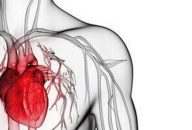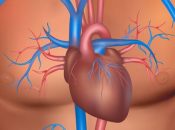A mean gradient ≥40 mmHg, an aortic valve area ≤1 cm², or a combination of both, during dobutamine stress echocardiography, correctly qualifies as severe aortic stenosis in about half of all patients. The other half consists in cases of pseudo-severe aortic stenosis. In turn, a projected aortic valve area ≤1 cm² is a much better indicator than the…
Reverse Myocardial Remodeling Following Valve Replacement
After aortic valve replacement, focal fibrosis does not resolve, but diffuse fibrosis and cell hypertrophy regress. As expected, this regression comes with structural and functional improvement that suggest it is a dynamic process. Fibrosis can be measured and quantified with cardiovascular MR, which makes it a potential therapeutic objective. Left ventricular hypertrophy is a key…
NOTION: 5-Year Outcomes of TAVR vs. Surgery in Low-Risk Patients are Promising
At 5 years, there were no differences in all-cause death, stroke, acute myocardial infarction, or all of these combined between low-risk, elderly patients who underwent transcatheter aortic valve replacement (TAVR) or conventional surgery. Taking into account reports from previous years, these results are not at all surprising. NOTION enrolled an all-comers population that was 70 years old…
Permanent Pacemaker: still TAVR’s Aquila’s Heel
TAVR has shown benefits in high risk patients (prohibitive) and in intermediate risk patients, but the need for permanent pacemaker implantation (PPI) continues to be a soft spot (especially in younger patients) given time of use, eventual replacement and associated complications. Even though there is little information on PPI, pacemakers are not associated with higher mortality, but they…
Next-Day Discharge after TAVR: Is It Viable?
Next-day discharge after transfemoral transcatheter aortic valve replacement (TAVR) might be viable, with no major complications at 30 days or one year, compared against patients with longer hospital stay. We only have to consider a few factors that will help us choose the most adequate patients for this modality without compromising safety. One of the main advantages…
Red Light for TAVR in Low Surgical Risk Patients
A new study raises an alarm against expanding transcatheter aortic valve replacement (TAVR) procedures to low surgical risk patients, since 2 year mortality seems higher in these patients with TAVR, compared to conventional surgery. This study will soon be published in Catheter Cardiovasc Interv. Expanding TAVR to low risk patients might involve risks we have not…
Is Emergency Cardiac Surgery Necessary in TAVR?
Life-threatening complications that require surgery during TAVR are infrequent. The proportion was originally thought to be between 1% and 2%. However, we now know that it is lower, even though we do not know how frequent it is or what are its most common causes. Its evolution, both in the short and in the long…
Coronary Disease Works as a 30-Day Predictor in TAVR
The association between aortic stenosis and coronary disease is common, since both conditions share pathogenesis, risk factors, and symptoms. Transcatheter aortic valve replacement (TAVR) is currently indicated for high-risk and inoperable patients. It also appears as a valid alternative for the treatment of intermediate-risk patients, and it could soon be indicated for low-risk patients. Coronary…
Surgical or Percutaneous Management of Mitral Leak
Mitral paravalvular leaks are relatively common after surgical mitral replacement, with an incidence of 7%-17%. Most of these are subclinical leaks, a mere echocardiogram finding, but about 3% of patients can develop heart failure, hemolysis, or a combination of both, thus requiring a new intervention. For symptomatic patients, new surgery has been the traditional treatment…
Leading Manufacturer of Balloon-Expandable Valves Launches Self-Expanding Device
Edwards Lifesciences could have been satisfied after the success of the PARTNER trials and the improvements to its balloon-expandable valve (mainly as regards the delivery system profile and paravalvular leak reduction) in its last model, SAPIEN 3. However, it was not. The company decided to keep going, developing a valve that is radically different from its…
Mild Leaks: TAVR’s Silent Enemies
Courtesy of Dr. Carlos Fava. Even though the presence of paravalvular regurgitation (PVR) has been reduced, thank to greater experience and new devices, it is still frequent and has an impact in survival (especially moderate and severe PVR). Recent research has shown that mild PVR also has a negative impact. However, these data were provided…










